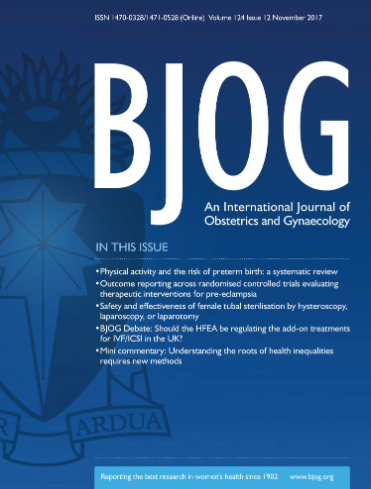Reactive Hypoglycaemia at Glucose Tolerance Test—Another Presentation of Gestational Diabetes: A Multicentre Retrospective Study
Abstract
Objective
To assess obstetric outcomes in pregnant women with ‘reactive hypoglycaemia’ (RH) during an oral glucose tolerance test (OGTT), defined as a 2-h blood glucose level lower than the fasting value.
Design
Retrospective observational study.
Setting
Two tertiary maternity units in the United Kingdom.
Population
A total of 1498 women with singleton pregnancies attending for an OGTT between April 2019 and July 2020.
Methods
Maternal and neonatal outcomes were compared between three groups: gestational diabetes, reactive hypoglycaemia and normal OGTT. Both logistic and linear regression models were used, which adjusted for maternal age at booking, ethnicity, parity and BMI.
Main Outcome Measures
Abdominal circumference > 95th centile, polyhydramnios, gestational age at delivery, preterm birth, birthweight, neonatal hypoglycaemia, admission to neonatal unit, perinatal mortality.
Results
Of the 1498 women, 26.7% (n = 400) had reactive hypoglycaemia, 27.8% (n = 417) GDM and 45.4% (n = 681) normal GTT. The reactive hypoglycaemia group were twice as likely to develop polyhydramnios compared with both the GDM (OR 2.77, 95% CI 1.40–5.50) and control groups (OR 2.47, 95% CI 1.31–4.65). Relative to those with GDM, women with reactive hypoglycaemia had a similar mean birthweight (mean difference 59.4 g, p = 0.06) but were less likely to experience neonatal hypoglycaemia (OR 0.30, 95% CI 0.001–0.15) or preterm birth (OR 0.33, 95% CI 0.18–0.60). No differences were found in maternal hypertensive disorders, abdominal circumference > 95th centile, shoulder dystocia, Apgar < 7, cord pH, admission to neonatal unit or perinatal mortality.
Conclusion
Women with reactive hypoglycaemia in this sample were at risk of adverse outcomes frequently associated with diabetes, including polyhydramnios.

 求助内容:
求助内容: 应助结果提醒方式:
应助结果提醒方式:


